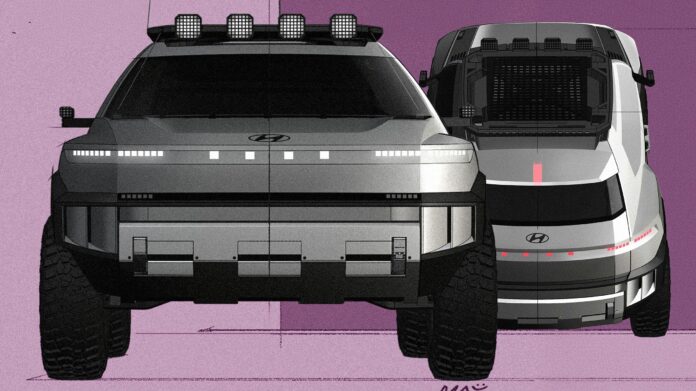Hyundai is preparing to unveil a new concept vehicle, the “Crater,” at the Los Angeles Auto Show, hinting at a potential expansion into the rugged off-road SUV market. This isn’t a subtle rebranding; the teaser images and name suggest a vehicle designed to compete directly with established players like the Ford Bronco and Toyota Land Cruiser.
A New Direction for Hyundai’s SUV Lineup
Currently, Hyundai’s SUV range is dominated by popular crossovers. While successful, they lack a dedicated off-road performer. The Crater concept appears to address this gap, with a design emphasizing capability over comfort. Short overhangs, aggressive fender flares, and a purposeful stance suggest a vehicle built for tackling challenging terrain.
Electrification or Combustion: The Powertrain Question
The concept’s enclosed grille and smooth bodywork raise questions about the powertrain. While Hyundai hasn’t confirmed details, the design leans toward an electric or hybrid setup. However, a traditional combustion or hybrid engine would position Hyundai more directly against Ford and Jeep, which currently dominate the off-road market.
Beyond Styling Packages: The Evolution of “XRT”
Hyundai’s existing “XRT” styling packages offer a more rugged aesthetic to its crossovers. The Crater concept suggests this could evolve into a more serious off-road capability. The company’s earlier attempt to capture a similar audience with the Santa Cruz pickup truck didn’t perform as expected, but the warmly-received Ioniq 5 XRT indicates a continued interest in this segment.
What This Means for the Market
Hyundai’s push into the off-road space reflects a broader trend in the automotive industry. Consumers are increasingly demanding vehicles capable of handling more than just paved roads. The Crater concept signals Hyundai’s intent to compete in this growing market, offering a potential alternative to established brands.
If Hyundai follows through with a production version of the Crater, it could significantly shake up the off-road SUV segment. The concept’s design suggests a vehicle that prioritizes capability and durability, positioning it as a serious competitor to established players






































